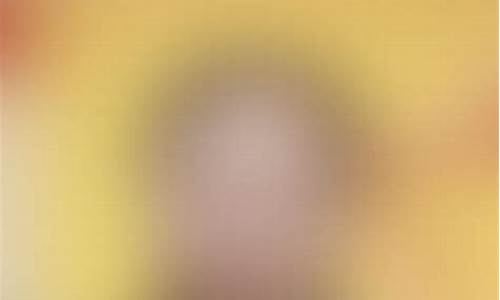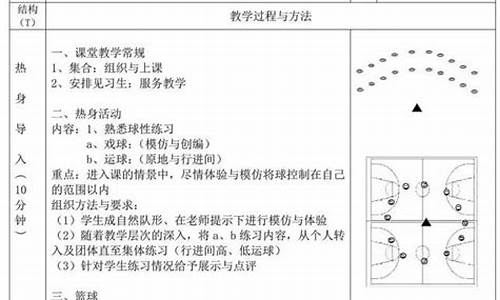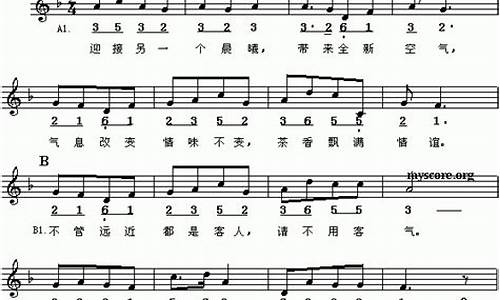1.怎样做英语奥运海报?
2.全运会开幕式上有哪些天津元素?
3.奥运五环的五种颜色分别代表什么?
4.奥运五环为什么是五个不同颜色的?
5.世界地图的简笔画以及七大洲八大洋的标注

体育手抄报怎么画
画运动手抄报的步骤如下:
1、首先在正上方画出报头,画出羽毛球拍样式的边框后,再将拿球拍的小女孩和羽毛球画出来。
2、画出地面与草丛后,中间再画出两个矩形边框,上方两侧画出足球和篮球。
3、将地面涂红,草丛涂绿并点上暗绿色圆点,将人物、球拍边框和羽毛球都涂好颜色。
4、将矩形框涂成红色条纹样式后,报头、足球和篮球也上好颜色,画出蓝色边界。
5、最后在边框内借用尺子画出文字栏,一张体育运动手抄报就画好了。
体育锻炼
体育锻炼可以促进生长发育、增进健康。体育运动能提高人体的吸氧能力,从而促进人体新陈代谢和解毒过程,体育运动可促进全身血液循环,使肌肉得到充分的营养,提高肌肉的代谢能力,使肌纤维变粗,发达、结实、匀称而有力。
体育锻炼可促使大脑清醒,提高学习效率。体育运动能增加大脑的供血,改善大脑血糖和氧的供应,促进脑细胞的新陈代谢,提高大脑皮质的活动能力。提高神经活动的兴奋性、灵敏性和反应性,提高对某些植物神经和脏器活动的自控能力。
足球运动员怎么画简笔画足球运动员简笔画步骤如下:
第一步:首先画出小男孩的头部,画出短发的纹理,脸是侧着的,画出眼睛、鼻子和嘴巴
第二步:接着画出小男孩的身体,穿着条纹短袖,一只脚高高的抬起,正在运动的姿态
第三步:在空中画上一个足球,画出足球的纹理,并给部分涂上黑色,小男孩的眼睛也涂黑色
第四步:再来给小男孩的头发涂上棕色,皮肤涂上肤色,脸颊两边画上腮红
第五步:最后给小男孩的上衣涂红蓝条纹,裤子涂蓝色,鞋子涂**,简单的体育运动简笔画就完成啦
足球运动员(footballplayer)是指以从事足球运动和足球赛为职业运动的人员,代表人物罗纳尔多、贝利等。
著名运动员:
罗马王子-托蒂斑马王子-皮耶罗忧郁王子-巴乔
核弹头-舍瓦大帝-李毅国王-坎通纳疯子-伊基塔大头-达力桑得罗
球王-贝利铁闸-斯塔姆外星人-罗纳尔多
兔子-萨维奥拉跳蚤-洛佩撕绿荫魔术师-小罗_ㄍ-卡恩
球王:贝利
小鸟:加林查
野兽:埃德蒙多
独狼:罗马里奥
白贝利:济科
外星人:罗纳尔多
爆米花:阿德里亚诺(现叫国王)
魔术师:罗纳尔迪尼奥
金左脚:里瓦尔多
卡卡
内马尔
奥运五环怎么画?使用ps软件。
具体步骤:
打开PS,新建文档。绘制一个正圆,并填充颜色。
载入正圆选区,在“选择”菜单下选择“变换选区”。
将选区的变换成长高为80%。
再次使用DEL键可以快速形成圆环。
选择圆环,按住CTRL和ALT、shift不动,可以快速复制一个圆环,再次修改其颜色。
圆环是环套一套,显然效果还要重新做。首先我们要得到相交的位置选区。选择图层,按住ctrl单击图层载入选区,再按住alt+ctrl+shift,点击另外一图层就可以得到相交的位置选区。
用选区算法的相交或相减算法都可以得到相交区域的一个选区。
再用DEL键就可删除像素,可以得到环套一套的效果。
再增加一些浮雕和投影的效果就可以使效果更好。
同样的方法可以获得五环效果。
怎样做英语奥运海报?
五大洲的好朋友简笔画如下:
地球上有五大洲,生活在五大洲的人们肤色和五官是不一样的。地球上的五大洲就像一个村庄一样,大家和谐相处。
第一步,先画出五个小朋友的头跟五官发型。
第二步画出他们的身体和四肢。
最后一步用水彩笔画出他们的肤色就完成啦。
拓展知识五大洲:
五大洲(Five continents)指地球陆地分成的五大版块,即亚洲(Asia)、欧洲(Europe)、非洲(Africa)、美洲(America)和大洋洲(Oceania)。地理学又将美洲分为北美洲和南美洲,南极洲无人居住,故也可称为七大洲。所以又有五大洲的说法。奥运五环的五环分别代表五大洲。五大洲中面积最大的是亚洲,第二大的是美洲,第三大的是非洲,第四大的是欧洲,最小的是大洋洲。
亚洲代表性国家:中国,日本,韩国,泰国,新加坡。绝大部分黄种人。西亚有白种人分布。
欧洲代表性国家:英国,法国,德国,希腊,意大利。白种人。
美洲代表性国家:美国,加拿大,巴西,阿根廷。北美洲,绝大多数欧洲白种人移民,非洲黑人奴隶后裔,但是最原始印第安民族是属于黄种人,黄棕色皮肤。爱斯基摩人也属于黄种人。
南美洲:大约百分之60是混血儿。就见罗纳尔多这种肤色。
非洲代表性国家:埃及,南非,利比亚,肯尼亚。黑种人。但是南非有一定量白种人分布。
大洋洲代表性国家:澳大利亚,新西兰。欧洲来的白种人居多。但是原始澳洲土著民族是黄种人。
全运会开幕式上有哪些天津元素?
画了个超大的奥运五环,然后在中间黑色的环中画上中国印,写上“Beijing 2008”。剩余的四环中你抄一些文章。标题可以在五环下面,空的地方画了一些简笔画,很简单,并写上英文。
2008北京奥运会吉祥物福娃英文介绍
The Official Mascots of the Beijing 2008 Olympic Games
Like the Five Olympic Rings from which they draw their color and inspiration, Fuwa will serve as the Official Mascots of Beijing 2008 Olympic Games, carrying a message of friendship and peace--and blessings from China--to children all over the world. Designed to express the playful qualities of five little children who form an intimate circle of friends, Fuwa also embody the natural characteristics of four of China's most popular animals--the Fish, the Panda, the Tibetan Antelope, the Swallow--and the Olympic Flame. Each of Fuwa has a rhyming two-syllable name--a traditional way of expressing affection for children in China. Beibei is the Fish, Jingjing is the Panda, Huanhuan is the Olympic Flame, Yingying is the Tibetan Antelope and Nini is the Swallow. When you put their names together--Bei Jing Huan Ying Ni--they say "Welcome to Beijing," offering a warm invitation that reflects the mission of Fuwa as young ambassadors for the Olympic Games. Fuwa also embody both the landscape and the dreams and aspirations of people from every part of the vast country of China. In their origins and their headpieces, you can see the five elements of nature--the sea, forest, fire, earth and sky--all stylistic rendered in ways that represent the deep traditional influences of Chinese folk art and ornamentation. Spreading Traditional Chinese Blessings Wherever They Go In the ancient culture of China, there is a grand tradition of spreading blessings through signs and symbols. Each of Fuwa symbolizes a different blessing--and will honor this tradition by carrying their blessings to the children of the world. Prosperity, hiness, passion, health and good luck will be spread to every continent as Fuwa carry their invitation to Beijing 2008 to every part of the globe. At the heart of their mission--and through all of their work--Fuwa will seek to unite the world in peace and friendship through the Olympic spirit. Dedicated to helping Beijing 2008 spread its theme of One World, One Dream to every continent, Fuwa reflect the deep desire of the Chinese people to reach out to the world in friendship through the Games--and to invite every man, woman and child to take part in the great celebration of human solidarity that China will host in the light of the flame in 2008.
Like all antelopes, Yingying is fast and agile and can swiftly cover great stretches of land as he races across the earth. A symbol of the vastness of China's landscape, the antelope carries the blessing of health, the strength of body that comes from harmony with nature. Yingying's flying pose captures the essence of a species unique to the Qinghai-Tibet Plateau, one of the first animals put under protection in China. The selection of the Tibetan Antelope reflects Beijing commitment to a Green Olympics. His head ornament incorporates several decorative styles from the Qinghai-Tibet and Sinkiang cultures and the ethnic design traditions of Western China. Strong in track and field events, Yingying is a quick-witted and agile boy who represents the yellow Olympic ring. Every spring and summer, the children of Beijing he flown beautiful kites on the currents of wind that blow through the capital. Among the kite designs, the golden-winged swallow is traditionally one of the most popular. Nini's figure is drawn from this grand tradition of flying designs. Her golden wings symbolize the infinite sky and spread good-luck as a blessing wherever she flies. Swallow is also pronounced "yan" in Chinese, and Yanjing is what Beijing was called as an ancient capital city. Among Fuwa, Nini is as innocent and joyful as a swallow. She is strong in gymnastics and represents the green Olympic ring.
In the intimate circle of Fuwa, Huanhuan is the big brother. He is a child of fire, symbolizing the Olympic Flame and the passion of sport--and passion is the blessing he bestows. Huanhuan stands in the center of Fuwa as the core embodiment of the Olympic spirit. And while he inspires all with the passion to run faster, jump higher and be stronger, he is also open and inviting. Wherever the light of Huanhuan shines, the inviting warmth of Beijing 2008--and the wishful blessings of the Chinese people--can be felt. The firery designs of his head ornament are drawn from the famed Dunhuang murals--with just a touch of China's traditional lucky designs. Huanhuan is outgoing and enthusiastic. He excels at all the ball games and represents the red Olympic ring.
Jingjing makes children smile--and that's why he brings the blessing of hiness wherever he goes. You can see his joy in the charming naivety of his dancing pose and the lovely we of his black and white fur. As a national treasure and a protected species, pandas are adored by people everywhere. The lotus designs in Jingjing's headdress, which are inspired by the porcelain paintings of the Song Dynasty (A.D.960-1234), symbolize the lush forest and the harmonious relationship between man and nature. Jingjing was chosen to represent our desire to protect nature's gifts--and to preserve the beauty of nature for all generations. Jingjing is charmingly na?ve and optimistic. He is an athlete noted for strength who represents the black Olympic ring.
In China's traditional culture and art, the fish and water designs are symbols of prosperity and harvest. And so Beibei carries the blessing of prosperity. A fish is also a symbol of surplus in Chinese culture, another measure of a good year and a good life. The ornamental lines of the water-we designs are taken from well-known Chinese paintings of the past. Among Fuwa, Beibei is known to be gentle and pure. Strong in water sports, she reflects the blue Olympic ring.
我的海报就这么做的,还不错。希望你能纳我。
奥运五环的五种颜色分别代表什么?
在全运会开幕式文体展演的现场,《潞河督运图》、杨柳青年画、海河浪花、天津之眼……一系列天津元素的全新表达让观众感觉既熟悉又新鲜。
导演孟可说:“我们想用天津元素来展现中国气派。一年前开始风后,挖掘了这座城市的很多特色,从中选取了最具代表性、最耳熟能详的元素,运用声光电的创意演绎出来,既让天津和全国观众耳目一新,又能有强烈代入感。”
《歌唱祖国》《在希望的田野上》两首与天津渊源很深的歌曲回荡在开幕式上,熟悉的旋律令不少观众热泪盈眶。而当天津地标建筑——“天津之眼”出现在场上时,全场欢声雷动。“天津之眼”随后一分为五,象征着奥运五环。
“中国著名的‘奥运三问’就是从天津发出的,天津与奥运有着深厚的渊源。”孟可说。
开幕式展演上,一朵朵海河浪花在光影科技的下翻溅出一项项体育运动的简笔画。这个创意源自天津市体育博物馆的一幅展板。孟可说:“当时看到近现代许多体育项目由天津传入全国的时间轴,感触很深,于是就用浪花来幻化出这些项目,用海河水的涌动展现体育在中国的传承。”
而《潞河督运图》的使用,则是导演组了解到天津是因漕运兴起的历史后,将这幅反映当年运河两岸繁华景象的长卷“搬”到了舞台上:一艘漕船从画中驶出,与小演员饰演的吉祥物“津娃”和智能机器人“优友”交错而过,完成了一场穿越时空的对话。“我们的总设计看到这幅图的时候,眼睛都是红的,”孟可透露,“只有先打动我们自己,才能有和热情打动观众。”
奥运五环为什么是五个不同颜色的?
它由5个奥林匹克环套接组成,可以是单色,也可以是蓝、黄、黑、绿、红5种颜色。环从左到右互相套接,上面是蓝、黑、红环,下面是是黄、绿环。整个造形为一个底部小的规则梯形。
奥林匹克标志最早是根据1913年顾拜旦的提议设计的,起初国际奥委会用蓝、黄、黑、绿、红色作为五环的颜色,是因为它能代表当时国际奥委会成员国国旗的颜色。
1914年在巴黎召开的庆祝奥运会复兴20周年的奥林匹克全会上,顾拜旦先生解释了他对标志的设计思想:“五环——蓝、黄、绿、红和黑环,象征世界上承认奥林匹克运动,并准备参加奥林匹克竞赛的五大洲,第六种颜色白色——旗帜的底色,意指所有国家都毫无例外地能在自己的旗帜下参加比赛。”因此,作为奥运会象征、相互环扣一起的5个圆环,便体现了顾拜旦提出的可以吸收殖民地民族参加奥运会,为各民族间的和平事业服务的思想。
自1920年第七届安特卫普奥运会起,五环的蓝、黄、黑、绿和红色开始成为五大洲的象征,分别代表欧洲、亚洲、非洲、澳洲和美洲,充分体现了奥林匹克主义的内容,“所有国家—一所有民族”的“奥林匹克大家庭”主题。
奥林匹克标志象征五大洲和全世界的运动员在奥运会上相聚一堂,充分体现了奥林匹克主义的内容," 所有国家—一所有民族"的“奥林匹大家庭"主题。它不仅代表着五大洲全世界运动员在奥林匹克旗帜下的团结和友谊,而且强调所有运动员应以公正、坦诚的运动精神在比赛场上相见。
世界地图的简笔画以及七大洲八大洋的标注
五个环分别代表着五大洲,奥运五环是一个整体,亚洲是**的,非洲是黑色的,欧洲是蓝色的,美洲是红色的,大洋洲是绿色的.五环代表着世界五大洲,五色代表的是世界五大洲不同肤色的人民,五环连在一起代表着五大洲的人们能够友好相处.
一般我们说起的七大洲即为亚洲、欧洲、非洲、大洋洲、北美洲、南美洲,和南极洲。
还有一种说法是五大洲,也就是奥运五环,即:亚洲、非洲、欧洲、美洲、澳洲!
大洋的话只有四个,就是北冰洋、太平洋、印度洋、大西洋。
而在当年动画《圣斗士星矢》中所说的七大洋,则是北冰洋、东太平洋、西太平洋、东印度洋、西印度洋、北大西洋、南大西洋,说白了还是四大洋,并没有您所说的“八大洋” 。








